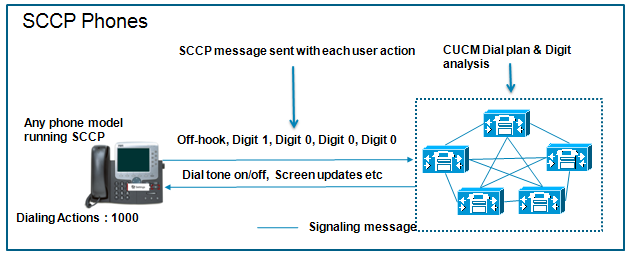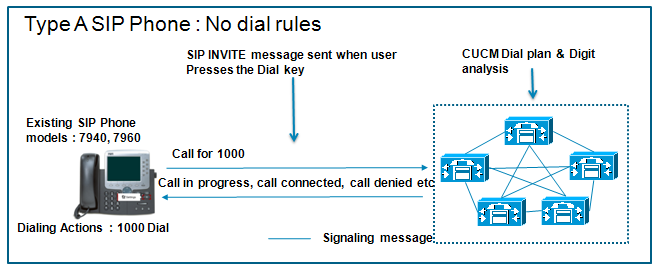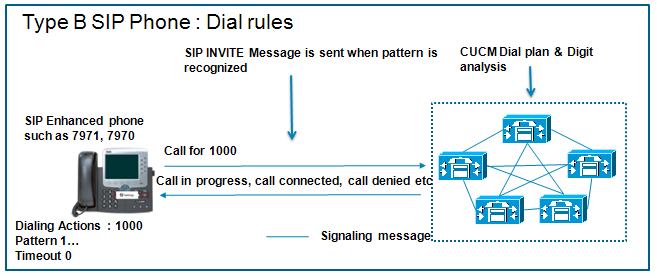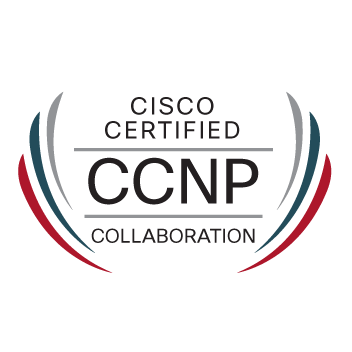- Cisco Community
- Technology and Support
- Collaboration
- Collaboration Knowledge Base
- Working concept of SCCP & SIP Phones and the Dial rules
- Subscribe to RSS Feed
- Mark as New
- Mark as Read
- Bookmark
- Subscribe
- Printer Friendly Page
- Report Inappropriate Content
- Subscribe to RSS Feed
- Mark as New
- Mark as Read
- Bookmark
- Subscribe
- Printer Friendly Page
- Report Inappropriate Content
12-29-2011 10:30 PM - edited 03-12-2019 09:42 AM
- Introduction
- IP Phone Registration Process
- SCCP & SIP Phone Digit forwarding methods
- How SCCP & SIP Phone Works?
- Related Information
Introduction
This document intends to help the beginners to understand the basics of IP Telephony. It explains the working concept of the SCCP & SIP Phones and the Dial rules, digit forwarding methods to initiate a call.
IP Phone Registration Process
As a prerequisite understand the IP Phone Registration Process. Refer the below link to understand the SCCP & SIP Phone Registration Process.
IP Phone, SCCP & SIP Phone Registration Process with CUCM
SCCP & SIP Phone Digit forwarding methods
Digit forwarding methods supported,
- SCCP Phones: Digit-by-Digit
- SIP Phones: Enbloc, KPML (default on newer phones), SIP dial rules
What is KPML?
It is nothing but Keypad Markup Language (KPML). Call came from an SIP Phone using KPML, CUCM receives, interprets and analyzes the dial plan on a digit-by-digit basis. Cisco SIP Phones that support KPML use digit-by-digit dialing by default. KPML is not supported on older SIP Phones. Type A phones.
How SCCP & SIP Phone Works?
SCCP Phones:
Cisco IP Phones using SCCP, TCP port 2000 report every user input even to CUCM immediately.
- As soon as the user goes off-hook, a signaling message is sent from the phone to the CUCM server with which it is registered. A user goes off-hook and then dials extension 1000. Each event is reported to CUCM in real time.
- All the call progress feedback provided by CUCM to the end user on the Cisco IP Phone, Screen display messages showing calling or called party, dial tone, secondary dial tone, ring back, reorder tone and so on is initiated by an SCCP message sent from CUCM to the Cisco IP Phone.
- Skinny Client Control Protocol (SCCP) is a stimulus/response protocol where the endpoint sends user input (stimulus) and expects some type of response from the server instructing the endpoint about what to do.
Note: - It is not possible to configure dial plan information (dial rules) on Cisco IP Phones using SCCP. All dial plan functionality is contained in the CUCM cluster with an SCCP phone.
A user dialing an international pattern that is denied by the end user's CoS deployed in CUCM will result in the reorder tone ie busy signal that is played to the calling party letting the party know that the "Call could not be completed as dialed".
If calls to the 976 area code are denied based on the calling party's configured CoS, a reorder tone is sent to the calling party phone as soon as the user dials 91976.

SIP IP Phones:
Type A SIP Phones: Cisco Unified IP Phone models 7905, 7912, 7940 and 7960
Type A SIP Phones support SIP dial rules, which are configured in CUCM and downloaded to the IP Phone at boot time. It does not support KPML. SIP dial rules will enable dial tone and traditional phone functionality on CUCM.
Type A SIP Phones: No Dial rules
Type A Cisco IP Phones using SIP firmware without SIP dial rules do not deliver a dial tone to the calling party when the calling party goes off-hook with the handset or speaker phone. All digits are sent to CUCM enbloc after the user completes the dialing and press the Dial softkey.
Figure shows, User making a call to extension 1000. The user dials 1000 followed by pressing the Dial soft key. The Cisco IP Phone sends a SIP INVITE message to CUCM with all dialed digits (enbloc). CUCM performs digit analysis and provides a call progress message to the IP Phone.

Type A SIP Phones: Dial rules
SIP dial rules allow SIP Phones to emulate the functionality of an SCCP Phone with dial tone and digit-by-digit pattern analysis. When SIP dial rules are leveraged, a user receives dial tone when going off-hook. This functionality is different than the default functionality on Cisco Type A phones converted to SIP, where there are no local dial rules.
Dialed digits are processed against the local SIP dial rules in real time. If a user dials a phone number that is rejected by the local SIP dial rules, for example pay dialing beginning with 9-1900 the call is dropped without being forwarded to CUCM. SIP dial rules can help minimized overhead bandwidth consumption and CUCM processor overhead.
A SIP INVITE message with enbloc signaling is sent from the Cisco SIP IP Phone to CUCM when the SIP dial rule of the Cisco IP Phone recognizes and permits the dialed pattern. End user do not need to press the Dial key like they had to on Cisco SIP type A phones. SIP dial rules allow Type A Phones to emulate SCCP and traditional phone systems while also providing processing and signaling overhead benefits.
Figure illustrates a phone configured to recognize all four-digit patterns beginning with a leading digit of 1. This pattern has an associated timeout value of 0. All user input actions matching the pattern will trigger the sending of the SIP INVITE message to CUCM immediately, without requiring the user to press the Dial key.

Type B SIP Phones: Cisco IP Phone models 79x1, 79x2, 79x5, 7970 and 7960
Type B and new model phones supports KPML and SIP dial rules. KPML is turned on by default on all Type B phone models 79x1, 79x2, 79x5, 7970 and7960
Type B SIP Phones: No Dial Rules
Cisco Type B SIP IP Phones offer functionality based on the KPML standard to report user activities. Each user input event (dialed digit or softkey/button) generates a KPML message to CUCM. This mode of operation emulates a similar end-user experience to that of phones using SCCP.
Type B SIP Phones: Dial Rules
Cisco Type B SIP Phones offer functionality based SIP INVITE Message. Every key the end user presses triggers an individual SIP message. The first event is communicated with a SIP INVITE, but subsequent messages use SIP NOTIFY messages. The SIP NOTIFY messages send KPML events corresponding to any buttons or soft keys pressed by the user. Cisco Type B SIP IP Phones with SIP dial rules operate in the same manner as Cisco Type A phones with dial rules.
Figure illustrates the enbloc signaling used with SIP dial rules.

Note: Cisco SIP Phones that support KPML use digit-by-digit dialing by default. KPML is not supported on older Cisco Type A SIP Phones. Type A phones only support enbloc dialing when using SIP firmware.
Related Information
- Mark as Read
- Mark as New
- Bookmark
- Permalink
- Report Inappropriate Content
Hi,
Under "Type B SIP Phones: Dial Rules", the last word of the last line has to be changed as "rules" instead of "peers".
And remove 7960 from the Type B SIP Phones list as 7960 is Type A phone.
Thanks,
Vignesh
- Mark as Read
- Mark as New
- Bookmark
- Permalink
- Report Inappropriate Content
Hi Vignesh
Thanks. I've corrected. Type B SIP phones includes 7960 also the classification is based on the functionality.
Regards
Lavanya
- Mark as Read
- Mark as New
- Bookmark
- Permalink
- Report Inappropriate Content
Hi Muthurani,
I always thought that all Type A SIP Phones didn't yet support KPML.
Could someone please clarify the graphic titled "Type A SIP Phone : Dial Rules".
This one makes mention of KPML Notify Messages being used.
Thanks,
Andrew
- Mark as Read
- Mark as New
- Bookmark
- Permalink
- Report Inappropriate Content
The titles for Type A SIP Phone: Dial Rules and Type B SIP Phone: Dial rules should be changed and the order of the images should be corrected.
- Mark as Read
- Mark as New
- Bookmark
- Permalink
- Report Inappropriate Content
Please accept my appreciation on writing a clear and concise document. It helped me clear the doubts I had.
- Mark as Read
- Mark as New
- Bookmark
- Permalink
- Report Inappropriate Content
Hello Amit
Glad that it helped you. This is really encouraging. Thanks.
Regards
Lavanya
- Mark as Read
- Mark as New
- Bookmark
- Permalink
- Report Inappropriate Content
I think there is an error in this article with the diagrams.
I think the diagram titled "Type A SIP Phone : Dial Rule" is incorrect. It shows a 7971 phone which is a Type B. I think the diagram should be moved further down into the type b section and titled something like "type b phone no dial rules"
- Mark as Read
- Mark as New
- Bookmark
- Permalink
- Report Inappropriate Content
Another possible error. Is this paragraph correct under the Type-B phones, with dialing rule ?
It seems to describe the default KPML function. The diagram following this paragraph seems correct for dialing rules but the text preceding the diagram doesn't seem correct.
"Type B SIP Phones: Dial Rules
Cisco Type B SIP Phones offer functionality based SIP INVITE Message. Every key the end user presses triggers an individual SIP message. The first event is communicated with a SIP INVITE, but subsequent messages use SIP NOTIFY messages. The SIP NOTIFY messages send KPML events corresponding to any buttons or soft keys pressed by the use"
- Mark as Read
- Mark as New
- Bookmark
- Permalink
- Report Inappropriate Content
Hi,
Thanks for article and thanks to other people as well who took time to comment.
Here is my question: What if SCCP phone is on-hook and user wants to dial extension 2013. He dials "200" then deletes last digit "0" by pressing "<<" and enters "13". He presses the dial softkey.
How digits will go to CUCM?
2 0 0 << 1 3
OR
2013
Thanks in advance.
Regards,
MM
- Mark as Read
- Mark as New
- Bookmark
- Permalink
- Report Inappropriate Content
Hi!
2013
|AppInfo |StationInit: (0001797) EnblocCall calledParty=2013
Dmitry
- Mark as Read
- Mark as New
- Bookmark
- Permalink
- Report Inappropriate Content
Hi Muthurani
Please can you correct what I think is an error in your explanation of Type B with SIP Dial Rules?
http://www.cisco.com/c/en/us/td/docs/voice_ip_comm/cucm/srnd/collab11/collab11/dialplan.html#76072
Firstly:
As soon as SIP dial rules are implemented on Type-B IP phones, KPML-based dialing is disabled. If a user dials a string of digits that do not match a SIP dial rule, none of the individual digit events will be relayed to Unified CM. Instead, the entire dialed string will be sent en-bloc to Unified CM once the dialing is complete (that is, once inter-digit timeout has occurred).
Secondly:
Type-B phones using SIP dial rules offer only one way to dial patterns not explicitly configured on the phone. If a dialed pattern does not match a SIP dial rule, the user has to wait for inter-digit timeout before the SIP NOTIFY message is sent to Unified CM. Unlike Type-A IP phones, Type-B IP phones do not have a Dial key to indicate the end of dialing, except when on-hook dialing is used. In the latter case, the user can press the “dial” key at any time to trigger the sending of all dialed digits to Unified CM.
- Jonathan
- Mark as Read
- Mark as New
- Bookmark
- Permalink
- Report Inappropriate Content
Lavanya, you have got the explanation for the SIP Type B phones with and without dial rules the wrong way round!
Please correct it or else remove this document as it is very misleading.
- Mark as Read
- Mark as New
- Bookmark
- Permalink
- Report Inappropriate Content
Please remove this doc since it contains a lot of errors
- Mark as Read
- Mark as New
- Bookmark
- Permalink
- Report Inappropriate Content
Find answers to your questions by entering keywords or phrases in the Search bar above. New here? Use these resources to familiarize yourself with the community:


